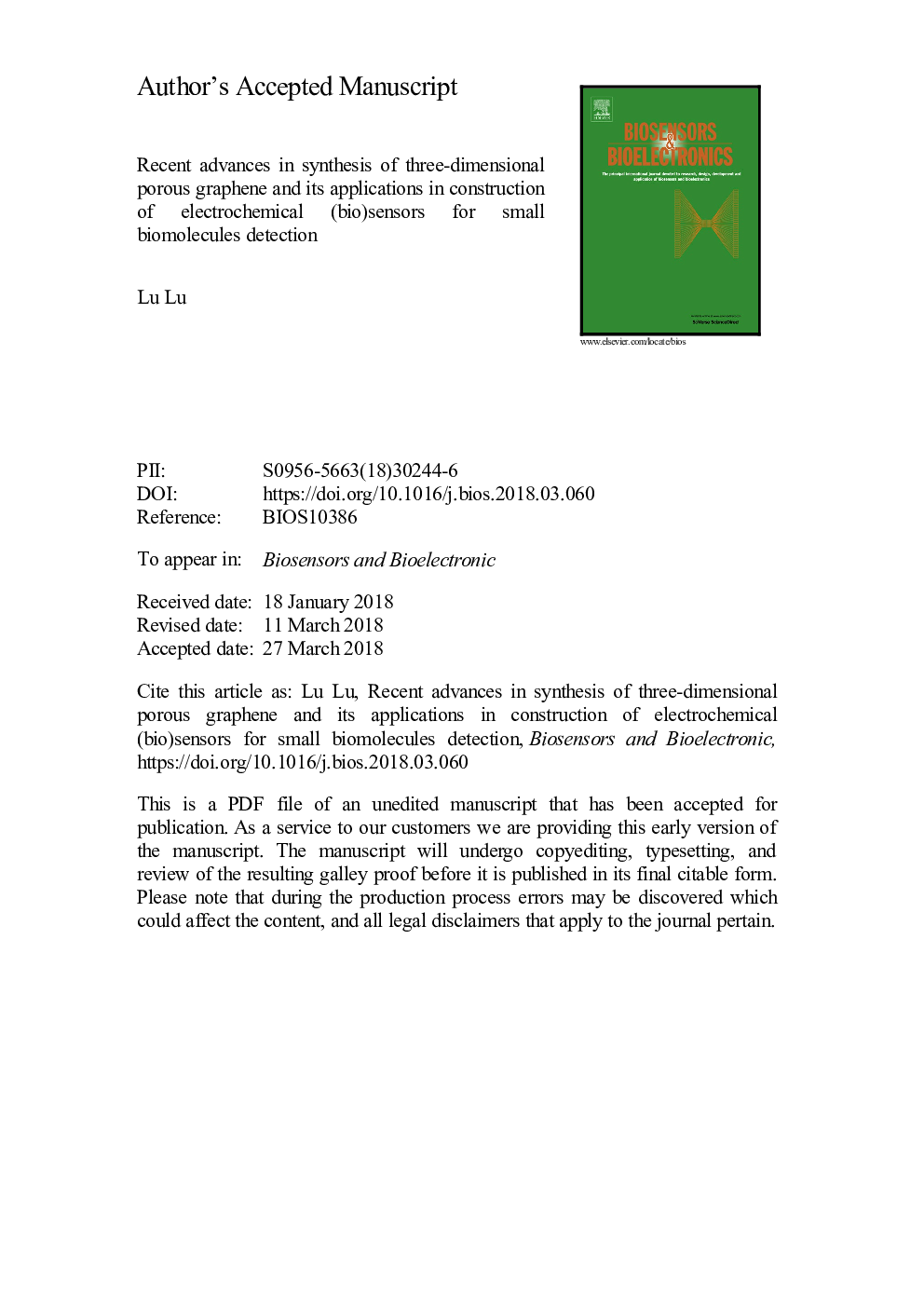| Article ID | Journal | Published Year | Pages | File Type |
|---|---|---|---|---|
| 7229388 | Biosensors and Bioelectronics | 2018 | 47 Pages |
Abstract
Electrochemical (bio)sensors have attracted much attention due to their high sensitivity, fast response time, biocompatibility, low cost and easy miniaturization. Specially, ever-growing necessity and interest have given rise to the fast development of electrochemical (bio)sensors for the detection of small biomolecules. They play enormous roles in the life processes with various biological function, such as life signal transmission, genetic expression and metabolism. Moreover, their amount in body can be used as an indicator for diagnosis of many diseases. For example, an abnormal concentration of blood glucose can indicate hyperglycemia or hypoglycemia. Graphene (GR) shows great applications in electrochemical (bio)sensors. Compared with two-dimensional (2D) GR that is inclined to stack together due to the strong Ï-Ï interaction, monolithic 3D porous GR has larger specific area, superior mechanical strength, better stability, higher conductivity and electrocatalytic activity. So they attracted more and increasing attention as sensing materials for small biomolecules. This review focuses on the recent advances and strategies in the fabrication methods of 3D porous GR and the development of various electrochemical (bio)sensors based on porous GR and its nanocomposites for the detection of small biomolecules. The challenges and future efforts direction of high-performance electrochemical (bio)sensors based on 3D porous GR for more sensitive analysis of small biomolecules are discussed and proposed. It will give readers an overall understanding of their progress and provide some theoretical guidelines for their future efforts and development.
Related Topics
Physical Sciences and Engineering
Chemistry
Analytical Chemistry
Authors
Lu Lu,
